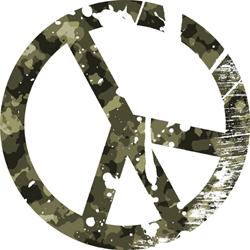
More evidence that low-calorie sweeteners are bad for your health
Studies show that artificial sweeteners can raise the risk of hypertension, metabolic syndrome, type 2 diabetes and heart disease, including stroke.

Natural Health News — Soldiers with post-traumatic stress disorder, could suffer fewer distressing symptoms if they were given training in yogic breathing, a new study has found.
One of the greatest casualties of war is its lasting effect on the minds of soldiers. Studies show, for example that more than 20% of veterans returning from the wars in Iraq and Afghanistan have post-traumatic stress disorder, and this presents a daunting public health problem.
In addition, according to the US Department of Veterans Affairs, at least 22 veterans take their own lives every day.
A new study from the Center for Investigating Healthy Minds (CIHM) at the Waisman Center of the University of Wisconsin-Madison offers hope for those suffering from the disorder.
Researchers there have shown that a breathing-based meditation practice called Sudarshan Kriya Yoga can be an effective treatment for PTSD.
Sudarshan Yoga is a practice of controlled breathing that directly affects the autonomic nervous system.
The study which included 21 soldiers – an active group of 11 and a control group of 10 – found that those who received the one-week training in yogic breathing showed lower anxiety, reduced respiration rates and fewer PTSD symptoms.
According to the scientists, theirs is the first randomised, controlled study to show that this type of breathing can benefit people with PTSD.
It is published in the Journal of Traumatic Stress.
Calming the nerves
Individuals with PTSD suffer from intrusive memories, heightened anxiety, and personality changes. The hallmark of the disorder is ‘hyperarousal’, which can be defined as overreacting to innocuous stimuli, and is often described as feeling “jumpy,” or easily startled and constantly on guard.
Hyperarousal is an expression of the autonomic nervous system, the system that controls the beating of the heart and other body functions, and governs one’s ability to respond to his or her environment.
Scientists believe hyperarousal is at the core of PTSD and the driving force behind some of its symptoms.
The researchers behind the current study say they were interested in Sudarshan Yoga because of its focus on manipulating the breath, and how that in turn may have consequences for the autonomic nervous system and specifically, hyperarousal.
Individual treatment is the key
According to Richard J. Davidson, founder of CIHM and one of the authors of the study, the goal is to enable physicians to prescribe individualised treatment based on the cognitive and emotional style of the individual patient.
Standard treatment interventions for PTSD offer mixed results. Some individuals are prescribed antidepressants and do well while others do not; others are treated with psychotherapy and still experience residual affects of the disorder.
A clinician, he says, should be able to “use a ‘tool box’ of psychological assessments to determine the cognitive and emotional style of the patient, and thereby determine a treatment that would be most effective for that individual,” he says.
“Right now, a large fraction of individuals who are given any one type of therapy are not improving on that therapy. The only way we can improve that is if we determine which kinds of people will benefit most from different types of treatments.”
Because Sudarshan Kriya Yoga has already been shown to increase optimism in college students, and reduce stress and anxiety in people suffering from depression. The practice has proven effective in balancing the autonomic nervous system and reducing symptoms of PTSD in tsunami survivors. Because of this, it may be an effective way to decrease suffering and, quite possibly, the incidence of suicide among veterans, he notes.

Please subscribe me to your newsletter mailing list. I have read the
privacy statement